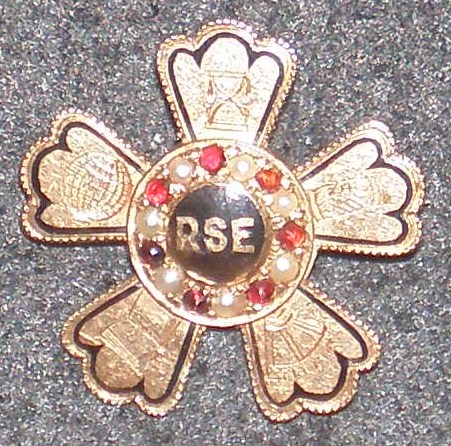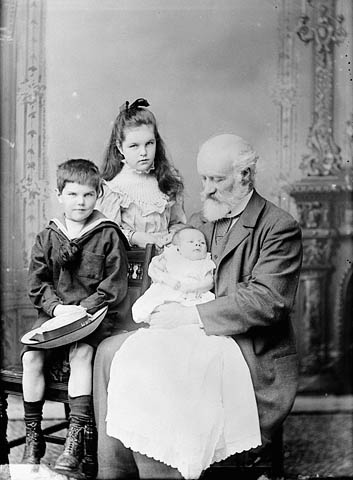|
Pi Eta
The Rensselaer Society of Engineers (RSE) is a social fraternity founded in 1866 at Rensselaer Polytechnic Institute in Troy, NY. Originally named The Pi Eta Scientific Society, the organization was incorporated in 1873 in the state of New York. Arriving on campus at about the same time as some of the first fraternities, it has remained one of the oldest "local" organizations in the U.S. RSE is the only independent fraternity at Rensselaer. They have chosen to remain independent to maintain the freedom to set their own policies and make their own managerial decisions. Contrary to what their name may imply, members major not only in engineering, but also in such disciplines as science, management, architecture, and the arts. Society members are active in not only campus and local activities, but are also in many national organizations. History The Rensselaer Society of Engineers was founded as the Pantotherian Society or The Pi Eta Scientific Society in 1866. The society was subse ... [...More Info...] [...Related Items...] OR: [Wikipedia] [Google] [Baidu] |
Rensselaer Polytechnic Institute
Rensselaer Polytechnic Institute (; RPI) is a private university, private research university in Troy, New York, United States. It is the oldest technological university in the English-speaking world and the Western Hemisphere. It was established in 1824 by Stephen Van Rensselaer and Amos Eaton for the "application of science to the common purposes of life". Built on a hillside, RPI's campus overlooks the city of Troy, New York, Troy and the Hudson River. The institute operates an on‑campus business incubator and the Rensselaer Technology Park. RPI is organized into six main schools which contain 37 departments, with emphasis on science and technology. It is Carnegie Classification of Institutions of Higher Education, classified among "R1: Doctoral Universities: Very High Research Activity". History 1824–1900 Stephen Van Rensselaer established the Rensselaer School on 5 November 1824 with a letter to the Reverend Dr. Samuel Blatchford (university president), Samuel ... [...More Info...] [...Related Items...] OR: [Wikipedia] [Google] [Baidu] |
William Metcalf (steel)
William Metcalf (3 September 1838 – 5 December 1909) was an American steel manufacturer. Metcalf was born at Pittsburgh, Pennsylvania, and graduated from Rensselaer Polytechnic Institute. Troy, New York, in 1858. In 1860–65, he had charge of the manufacture of the heavy Rodman and Dahlgren guns at the Fort Pitt Foundry in Pittsburgh, where most of the heavy artillery used by the Federal government during the Civil War was made. After 1868 he was engaged continuously in steel manufacturing, and in 1897 he organized the Braeburn Steel Company, of which he was the head until his death. He is credited with having made the first crucible steel in America. In 1881 he served as president of the American Institute of Mining Engineers and in 1893 he held the presidency of the American Society of Civil Engineers The American Society of Civil Engineers (ASCE) is a tax-exempt professional body founded in 1852 to represent members of the civil engineering profession worldwide ... [...More Info...] [...Related Items...] OR: [Wikipedia] [Google] [Baidu] |
John Inglis (American Football)
John W. Inglis (September 4, 1887 – October 6, 1918) was the head football coach for the Rensselaer Polytechnic Institute Rensselaer Polytechnic Institute (; RPI) is a private university, private research university in Troy, New York, United States. It is the oldest technological university in the English-speaking world and the Western Hemisphere. It was establishe ... Engineers football team from 1911 to 1913. He compiled a record of 15–9–4. Head coaching record References 1887 births 1918 deaths RPI Engineers football coaches Sportspeople from Troy, New York {{1910s-collegefootball-coach-stub ... [...More Info...] [...Related Items...] OR: [Wikipedia] [Google] [Baidu] |
Hunter Process
The Hunter process was the first industrial process to produce pure metallic titanium. It was invented in 1910 by Matthew A. Hunter, a chemist born in New Zealand who worked in the United States. The process involves reducing titanium tetrachloride (TiCl4) with sodium (Na) in a batch reactor with an inert atmosphere at a temperature of 1,000 °C. Diluted hydrochloric acid is then used to leach the salt from the product. :TiCl4(g) + 4 Na(l) → 4 NaCl(l) + Ti(s) Prior to the Hunter process, all efforts to produce Ti metal afforded highly impure material, often titanium nitride (which resembles a metal). The Hunter process was used until 1993, when it was replaced by the more economical Kroll process, which was developed in the 1940s. In the Kroll process, TiCl4 is reduced by magnesium instead of sodium. Both methods share the same initial step, obtaining TiCl4 from ore by chlorination and carbothermic reduction of the oxygen. The Kroll process is now the most commo ... [...More Info...] [...Related Items...] OR: [Wikipedia] [Google] [Baidu] |
Matthew A
Matthew may refer to: * Matthew (given name) * Matthew (surname) * ''Matthew'' (album), a 2000 album by rapper Kool Keith * Matthew (elm cultivar), a cultivar of the Chinese Elm ''Ulmus parvifolia'' Christianity * Matthew the Apostle, one of the apostles of Jesus * Gospel of Matthew, a book of the Bible Ships * ''Matthew'' (1497 ship), the ship sailed by John Cabot in 1497, with two 1990s replicas * MV ''Matthew I'', a suspected drug-runner scuttled in 2013 * Interdiction of MV ''Matthew'', a 2023 operation of the Irish military against a 2001 Panamanian cargo ship See also * Matt (given name), the diminutive form of Matthew * Mathew, alternative spelling of Matthew * Matthews (other) * Matthew effect The Matthew effect, sometimes called the Matthew principle or cumulative advantage, is the tendency of individuals to accrue social or economic success in proportion to their initial level of popularity, friends, and wealth. It is sometimes summar ... * Tropic ... [...More Info...] [...Related Items...] OR: [Wikipedia] [Google] [Baidu] |
William O
William is a masculine given name of Germanic origin. It became popular in England after the Norman conquest in 1066,All Things William"Meaning & Origin of the Name"/ref> and remained so throughout the Middle Ages and into the modern era. It is sometimes abbreviated "Wm." Shortened familiar versions in English include Will or Wil, Wills, Willy, Willie, Bill, Billie, and Billy. A common Irish form is Liam. Scottish diminutives include Wull, Willie or Wullie (as in Oor Wullie). Female forms include Willa, Willemina, Wilma and Wilhelmina. Etymology William is related to the German given name ''Wilhelm''. Both ultimately descend from Proto-Germanic ''*Wiljahelmaz'', with a direct cognate also in the Old Norse name ''Vilhjalmr'' and a West Germanic borrowing into Medieval Latin ''Willelmus''. The Proto-Germanic name is a compound of *''wiljô'' "will, wish, desire" and *''helmaz'' "helm, helmet".Hanks, Hardcastle and Hodges, ''Oxford Dictionary of First Names'', Oxford ... [...More Info...] [...Related Items...] OR: [Wikipedia] [Google] [Baidu] |
Sandford Fleming
Sir Sandford Fleming (January 7, 1827 – July 22, 1915) was a Scottish Canadian engineer and inventor. Born and raised in Scotland, he immigrated to colonial Canada at the age of 18. He promoted worldwide standard time zones, a prime meridian, and use of the 24-hour clock as key elements to communicating the accurate time, all of which influenced the creation of Coordinated Universal Time. He designed Canada's first postage stamp, produced a great deal of work in the fields of surveying, land surveying and cartography, map making, engineered much of the Intercolonial Railway and the first several hundred kilometers of the Canadian Pacific Railway, and was a founding member of the Royal Society of Canada and founder of the Royal Canadian Institute, Canadian Institute (a science organization in Toronto). Early life In 1827, Fleming was born in Kirkcaldy, Fife, Scotland to Andrew and Elizabeth Fleming. At the age of 14 he was apprenticed as a surveyor and in 1845, at the age of 1 ... [...More Info...] [...Related Items...] OR: [Wikipedia] [Google] [Baidu] |
Sanford Lockwood Cluett
Sanford Lockwood Cluett (June 6, 1874 – May 17, 1968) was an American engineer, inventor, and businessman who invented Sanforization (1928), a process to pre-shrink woven fabrics, and Clupak paper (1957) used for stretchable shopping bags and wrapping paper. Cluett held about 200 patents covering a variety of techniques. Cluett was vice president and a director of Cluett, Peabody and Company, Inc. of Troy, New York. During 1904–1917, Cluett had served in the New York National Guard, reaching the rank of major. Life and work Sanford Lockwood Cluett was born on June 6, 1874, in Troy, NY, as son of Edmund Cluett and Mary Alice Stone Cluett. He attended the local Troy Academy, graduating in 1894. Cluett received a civil engineering degree from Rensselaer Polytechnic Institute (RPI) in 1898. In 1897, Cluett had joined the New York National Guard, in the rank of private. He was active in the New York Volunteer Infantry during the Spanish–American War. By July 1898, he was tra ... [...More Info...] [...Related Items...] OR: [Wikipedia] [Google] [Baidu] |
Isthmian Canal Commission
The Isthmian Canal Commission (often known as the ICC) was an American administration commission set up to oversee the construction of the Panama Canal in the early years of American involvement. Established on February 26, 1904, it was given control of the Panama Canal Zone over which the United States exercised sovereignty. The commission reported directly to Secretary of War William Taft. It was initially composed of seven members, appointed by President Theodore Roosevelt, directed to avoid the inefficiency and corruption that had plagued the French 15 years earlier. On May 6, 1904, President Theodore Roosevelt appointed John Findley Wallace, formerly chief engineer and finally general manager of the Illinois Central Railroad, chief engineer of the Panama Canal project. Wallace was paid a $25,000 annual salary, the highest of any government employee at that time other than the president. In addition to the engineering and worker health problems, Wallace faced many bureaucrat ... [...More Info...] [...Related Items...] OR: [Wikipedia] [Google] [Baidu] |
Catskill Aqueduct
The Catskill Aqueduct is an aqueduct in the New York City water supply system which brings water from the Catskill Mountains to Kensico Dam in Westchester County, New York. There it joins with waters from the Kensico watershed and the Delaware Aqueduct. After mixing and settling, the flow from Kensico continues in the aqueduct to the Hillview Reservoir in Yonkers for distribution in the City. The aqueduct is fed by the waters of the Schoharie and Ashokan reservoirs located in Ulster County. History Construction began in 1907. Numerous test shafts were dug to determine the stability of the area's sub-surface geology to ensure both the impermeability of the completed reservoirs and holding strength of their various levees, tunnels, dikes, and dams, and the integrity of the structures of the aqueduct. The aqueduct proper was completed in 1916 and the entire Catskill Aqueduct system including three dams and 67 shafts was completed in 1924. The total cost of constructing t ... [...More Info...] [...Related Items...] OR: [Wikipedia] [Google] [Baidu] |
William Hubert Burr
William Hubert Burr C.E. (July 14, 1851 – December 13, 1934) was an American civil engineer Biography William Hubert Burr was born at Watertown, Connecticut on July 14, 1851.Burr, William Hubert in '''' (1926 edition); pp. 384–385 He received his education at the . Over several decades, he worked at various places. In 1884 he became assistant engineer to the |


